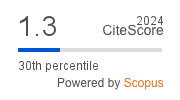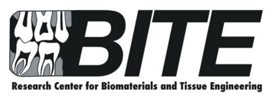Dental caries and body mass index in Mosul City schoolchildren
Downloads
Background: There is a potential correlation between tooth loss and dental caries in both obese and underweight patients. The presence of extensive dental caries can delay the process of eating, leading to a subsequent decrease in body weight. Purpose: The objective of this study was to examine the correlation between dental caries and body mass index (BMI) in schoolchildren residing in Mosul City. Methods: The present cross-sectional study was conducted on a randomized sample of 7- to 10-year-old school students. The study assessed the clinical characteristics, namely the decayed, missing, and filled teeth (DMFT/dmft) index. The DMFT index represents the number of decayed, missing, and filled teeth in the permanent dentition, while the dmft index pertains to deciduous dentition. After adjusting for age, gender, height, and weight, BMI-age percentiles were determined using the BMI Percentile Calculator for Children and Teens. Children were then categorized as underweight, normal weight, overweight, or obese. In the statistical analysis, the Kruskal–Wallis test was employed to examine variations between categorical variables. Results: The prevalence of dental caries in primary dentition was found to be 80.33%, whereas in permanent dentition, it was 50.33%. The majority of children affected by caries were in the obesity and overweight categories, followed by those with normal weight, while the lowest proportion was observed among underweight children. Conclusion: The findings indicate variations in the occurrence of dental caries across different subgroups of children based on their BMI-age percentiles.
Downloads
Gomez J. Detection and diagnosis of the early caries lesion. BMC Oral Health. 2015; 15(Suppl 1): S3. doi: https://doi.org/10.1186/1472-6831-15-S1-S3
Salmiah S, Luthfiani L, Amalia Z, Kusumah D. The correlation between untreated caries and the nutritional status of 6–12 years old children in the Medan Maimun and Medan Marelan sub-district. Dent J. 2018; 51(1): 10–3. doi: https://doi.org/10.20473/j.djmkg.v51.i1.p10-13
Wening GS, Bramantoro T, Palupi R, Ramadhani A, Alvita D. Overview of dental caries severity and body mass index (BMI) on elementary school children. J Int Oral Heal. 2019; 11(7): 48–55. doi: https://doi.org/10.4103/jioh.jioh_259_18
Yılmaz H, Keleş S. Recent methods for diagnosis of dental caries in dentistry. Meandros Med Dent J. 2018; 19: 1–8. doi: https://doi.org/10.4274/meandros.21931
Sheiham A, James WPT. Diet and dental caries. J Dent Res. 2015; 94(10): 1341–7. doi: https://doi.org/10.1177/0022034515590377
Fernández MR, Goettems ML, Demarco FF, Corrêa MB. Is obesity associated to dental caries in Brazilian schoolchildren? Braz Oral Res. 2017; 31: 1–9. doi: https://doi.org/10.1590/1807-3107bor-2017.vol31.0083
Uerlich MF, Baker SR, Day PF, Brown L, Vettore M V. Common determinants of dental caries and obesity in children: a multi-ethnic nested birth cohort study in the United Kingdom. Int J Environ Res Public Health. 2021; 18(23): 12561. doi: https://doi.org/10.3390/ijerph182312561
Oniszczenko W, Stanisławiak E. Association between sex and body mass index as mediated by temperament in a nonclinical adult sample. Eat Weight Disord - Stud Anorexia, Bulim Obes. 2019; 24(2): 291–8. doi: https://doi.org/10.1007/s40519-018-0617-8
Indrawati R, Budi HS, Luthfi M, Aulia DN, Izzat T, Pradopo S. The relation between decay missing filled-teeth (DMF-t), body mass index (BMI) with salivary human beta-3 (HBD-3) secretion in children with caries and free caries. Malaysian J Med Heal Sci. 2020; 16(4): 71–5. web: https://medic.upm.edu.my/upload/dokumen/2020070611233114_MJMHS_0161.pdf
Younus MS, Ahmed K, Kala D. The effect of body mass index on tooth eruption and dental caries. Dent J. 2020; 53(3): 140–3. doi: https://doi.org/10.20473/j.djmkg.v53.i3.p140-143
Dikshit P, Limbu S, Bhattarai R. Relationship of body mass index with dental caries among children attending pediatric dental department in an institute. JNMA J Nepal Med Assoc. 2018; 56(210): 582–6. pubmed: http://www.ncbi.nlm.nih.gov/pubmed/30376001
Karki S, Päkkilä J, Ryhänen T, Laitala M, Humagain M, Ojaniemi M, Anttonen V. Body mass index and dental caries experience in Nepalese schoolchildren. Community Dent Oral Epidemiol. 2019; 47(4): 346–57. doi: https://doi.org/10.1111/cdoe.12465
Nkambule NR, Madiba TK, Bhayat A. Dental caries, body mass index, and diet among learners at selected primary schools in Pretoria, Gauteng Province, South Africa. J Contemp Dent Pract. 2019; 20(11): 1241–8. pubmed: http://www.ncbi.nlm.nih.gov/pubmed/31892673
Manohar N, Hayen A, Fahey P, Arora A. Obesity and dental caries in early childhood: A systematic review and meta‐analyses. Obes Rev. 2020; 21(3): e12960. doi: https://doi.org/10.1111/obr.12960
Ogden CL, Freedman DS, Hales CM. CDC extended BMI-for-age percentiles versus percent of the 95th percentile. Pediatrics. 2023; 152(3): e2023062285. doi: https://doi.org/10.1542/peds.2023-062285
Uribe SE, Innes N, Maldupa I. The global prevalence of early childhood caries: A systematic review with meta‐analysis using the WHO diagnostic criteria. Int J Paediatr Dent. 2021; 31(6): 817–30. doi: https://doi.org/10.1111/ipd.12783
Farooqi FA, Khabeer A, Moheet IA, Khan SQ, Farooq I, ArRejaie AS. Prevalence of dental caries in primary and permanent teeth and its relation with tooth brushing habits among schoolchildren in Eastern Saudi Arabia. Saudi Med J. 2015; 36(6): 737–42. doi: https://doi.org/10.15537/smj.2015.6.10888
Bhayat A, Ahmad M, Fadel H. Association between body mass index, diet and dental caries in Grade 6 boys in Medina, Saudi Arabia. East Mediterr Heal J. 2016; 22(9): 687–93. doi: https://doi.org/10.26719/2016.22.9.687
AlBlehed AK, AlThumairy AF, AlTurayri WS, Alassaf A, Almulhim B, Alghamdi S, Almalki A, Mallineni SK. Assessment of knowledge, attitude and practices regarding oral hygiene among the parents of pre-school children: A cross-sectional study. Ann Med Health Sci Res. 2021; 11(S2): 82–6. web: https://www.amhsr.org/articles/assessment-of-knowledge-attitude-and-practices-regarding-oral-hygiene-among-the-parents-of-pre-school-children-a-crossse.pdf
Kubala E, Strzelecka P, Grzegocka M, Lietz-Kijak D, Gronwald H, Skomro P, Kijak E. A review of selected studies that determine the physical and chemical properties of saliva in the field of dental treatment. Biomed Res Int. 2018; 2018: 1–13. doi: https://doi.org/10.1155/2018/6572381
Mohammed AI, Diab BS. Caries experience and salivary physicochemical characteristics among overweight intermediate school females aged 13 - 15 years in Babylon - Iraq. J Baghdad Coll Dent. 2013; 25(3): 130–3. doi: https://doi.org/10.12816/0015010
Kotha SB, Terkawi SA, Mubaraki SA, Saffan AD Al, Kotha SL, Mallineni SK. Association between body mass index (BMI) and dental caries among 6–12-year-old school children. Children. 2022; 9(5): 608. doi: https://doi.org/10.3390/children9050608
Al-Kamal AA. Caries experience in relation to weight status among school children age 7-12 year-old in Tikrit City. Tikrit J Dent Sci. 2016; 4(1): 16–21. doi: https://doi.org/10.25130/tjds.4.1.4
Jafar ZJ, Aldafaai RR, Radhi NJMH. Oral health status in relation to anthropometric measurements in a group of Iraqi children. J Res Med Dent Sci. 2022; 10(1): 104–9. web: https://www.jrmds.in/articles/oral-health-status-in-relation-to-anthropometric-measurements-in-a-group-of-iraqi-children-89071.html
Liu Z, Dong L, Zheng Z, Liu S, Gong S, Meng L, Xin Y, Jiang X. Mechanism, prevention, and treatment of radiation-induced salivary gland injury related to oxidative stress. Antioxidants. 2021; 10(11): 1666. doi: https://doi.org/10.3390/antiox10111666
Denucci G, Mantilla T, Amaral F, Basting R, França F, Turssi C. Saliva with reduced calcium and phosphorous concentrations: Effect on erosion dental lesions. Oral Dis. 2018; 24(6): 957–63. doi: https://doi.org/10.1111/odi.12843
Nijakowski K, Lehmann A, Rutkowski R, Korybalska K, Witowski J, Surdacka A. Poor oral hygiene and high levels of inflammatory cytokines in saliva predict the risk of overweight and obesity. Int J Environ Res Public Health. 2020; 17(17): 6310. doi: https://doi.org/10.3390/ijerph17176310
Ryan ME, Raja V. Diet, obesity, diabetes, and periodontitis: a syndemic approach to management. Curr Oral Heal Reports. 2016; 3(1): 14–27. doi: https://doi.org/10.1007/s40496-016-0075-1
Copyright (c) 2025 Dental Journal

This work is licensed under a Creative Commons Attribution-ShareAlike 4.0 International License.
- Every manuscript submitted to must observe the policy and terms set by the Dental Journal (Majalah Kedokteran Gigi).
- Publication rights to manuscript content published by the Dental Journal (Majalah Kedokteran Gigi) is owned by the journal with the consent and approval of the author(s) concerned.
- Full texts of electronically published manuscripts can be accessed free of charge and used according to the license shown below.
- The Dental Journal (Majalah Kedokteran Gigi) is licensed under a Creative Commons Attribution-ShareAlike 4.0 International License

















